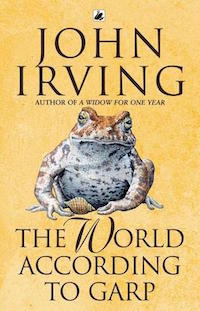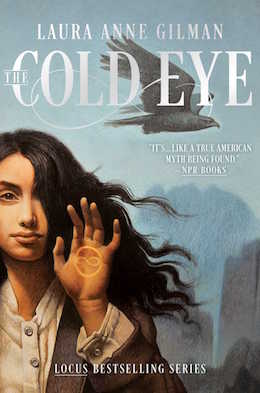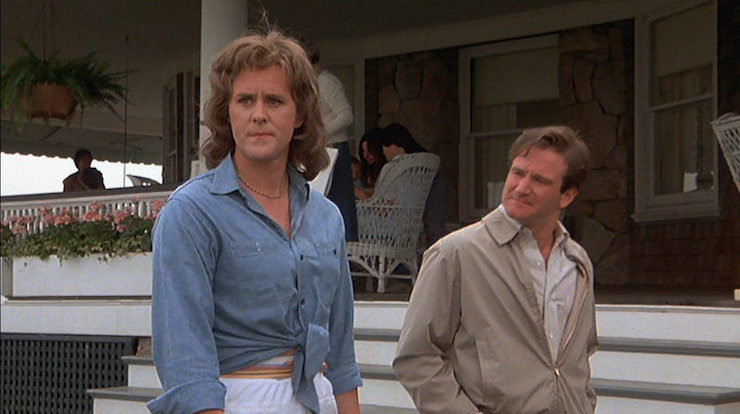In the mid 1980s, I was a teenager, discovering that my mother and I actually have weirdly overlapping tastes (weird because she’s all about literary fiction and the depressing Russians, and I’m all about genre fiction and funky Latin Americans). But there is some overlap, and for a year or so, it fell square on the shoulders of John Irving.
Which, when I think back on it, isn’t all that surprising. He’s depressing and literary and slightly funky and pushed social borders, and occasionally dipped his toes into the out-and-out Weird.
And wow, did he piss me off.
Wait, let me back up.
The rule in our household was that anything on the shelves was fair game: if you were interested enough to pick it up, you could try reading it.
 So, I was fourteen or so, and the books in question were The World According to Garp and The Hotel New Hampshire, which I stole borrowed from my mother’s reading table, because the flap copy sounded weird and different.
So, I was fourteen or so, and the books in question were The World According to Garp and The Hotel New Hampshire, which I stole borrowed from my mother’s reading table, because the flap copy sounded weird and different.
It’s safe to say that both books were definitely different. And also, by the standards of the day, weird. And that fourteen-ish is probably both an excellent and a terrible time to read John Irving, especially if you’re female.
Both of those books are, in their own way, brilliant. Even if you hate his writing, his themes, and his voice, it’s hard to argue that he’s not extremely good at what he does. And he’s clever, oh so very clever.
The problem is, clever isn’t enough.
Oh, at the time I was fascinated. His characters are so messed up, are shoved so far outside the cultural norms, either by accident of birth or acts of life, that they’ve become freaks. And there was Irving, ripping down the Acceptable American Mainstream facade and insisting that we not only look at the freaks, but that we embrace them, too. That we let them be leads, that we let them be heroes.
And sweet baby flying spaghetti monster, that resonated with me at fourteen. It resonated with a lot of people, obviously, because they were not only bestsellers, but were made into high-visibility movies, albeit ones with much of the scorpion’s sting removed.
But it also made me—female, fourteen, starting to poke around into sexuality and gender and gender roles, all things Irving was also poking around—start to ask “but why?” Why are these characters only interesting to you if they’ve been damaged, either by rape (a continuing, and ickily-lovingly documented theme in Irving’s work, especially of younger women) or gender/race restrictions and oppression?
And the more I thought about it, the more pissed off I got. Yes, Irving was embracing the freaks and the damaged, but I got the feeling that he wasn’t doing it out of affection for those characters. Or, if it was an affection, it was an unpleasantly paternalistic sort. His characters were always kept separate, isolated, either by the world around them or by their own issues, and they never, ever seem to be integrated into the larger world. Yeah, they can achieve a sort of happiness and success … but neither they nor the reader is ever allowed to forget that the only thing making them interesting (or worth writing about) is their “freak” status.
Their stories weren’t a celebration of people dealing with damage, they were celebrations of the damage done.
It was at that point, during a reread of Garp, that I for the first time ever threw a book across the room. Because that was bullshit. Yeah, I got it, breaking things and putting them back together was what made them stand out, made them interesting. And in fiction we emphasize the differences, not the sameness, for maximum effect. But the idea that this writer was making a career basically fetishizing that breakage—oh, it pissed me off so much, with all the outrage only a teenager can muster on behalf of fictional characters.
But while I moved on to other writers, and other books (and never did go back to Irving), that sense of outrage stayed with me, reshaping itself into frustration, and the frustration into determination as I started to work toward my own goals of being a writer. The memory of that outrage, the flavor of that frustration, shaped the stories I needed to tell.
It is probably utterly not coincidental that my very first professional story sale, “All the Comforts of Home” was about how being isolated from society, even for the very best of intentions, kills. You can’t remove humans from each other, put them on display, and expect them to thrive.
Yes, I wanted to write about people who were seen as freaks, who had been broken out of the Acceptable Mainstream Mold, because Irving had been right: those are the more interesting characters to show. But I didn’t want to punish them for it.
And I didn’t want that punishment to be seen as what was valuable about them.
Over the years, I’ve played with the idea of the outsider reclaiming her belonging (the Retrievers series), and the insider learning how to accept her damage (the Portals duology). But it wasn’t until the Devil’s West books that I faced head-on what had been simmering since those teenaged years. I wanted to show those characters as part of the society that created them, not isolated or sensationalized exceptions. More, I wanted to show them as active parts of that society.
In Silver on the Road and The Cold Eye, Gabriel has been broken not by who he is, but by what he wants (and can never be), while Isobel has to acknowledge certain terrible truths about herself. It’s painful, and potentially devastating.
Neither of them, however, isolates themselves, or allows themselves to be isolated as an inevitable reaction—the things that drove me to throw Mr. Irving’s book across the room, so many years ago. They choose to dive in, to interact, however painfully, and to be part of the greater whole. Not out of guilt, obligation, or Chosen One fate, but because this is who they choose to be. What they choose to do.
Nobody escapes without damage. But the damage should never be the point.
Top image: The World According to Garp (1982)
 Laura Anne Gilman is the author of the Cosa Nostradamus books (the Retrievers and Paranormal Scene Investigations urban fantasy series) and the Nebula Award-nominated Vineart War trilogy. The Cold Eye, the sequel to Silver on the Road, is available now from Saga Press. Follow her at @LAGilman.
Laura Anne Gilman is the author of the Cosa Nostradamus books (the Retrievers and Paranormal Scene Investigations urban fantasy series) and the Nebula Award-nominated Vineart War trilogy. The Cold Eye, the sequel to Silver on the Road, is available now from Saga Press. Follow her at @LAGilman.











I read and re-read Garp several times. Though filled with damaged persons, they all try very hard to be part of what was perceived as normal. Even the house they buy is damaged but perceived as valuable since… how many times will a plane land on a house!
I read Garp exactly once, and I vividly remember being royally pissed off when I got to the last page and discovered that yes, the whole book was as bad as I kept thinking it was as I plowed through it. And I too threw the book across the room; in fact, instead of giving it to Goodwill or my local library, I actually threw it in the garbage. That was the last time (and it was at least 30 years ago) that I finished a book I hated, on the basis that I had to finish whatever I started; now, if I find myself hating something that much, I stop — life’s too short. So I’m glad to find I wasn’t the only person who didn’t like that … thing.
I am in agreement with Gilman. How many more brilliant and quirky books do we need that fetishize female sexuality? From Updike to Irving, Bukowski and Mailer. I don’t disagree with the prerogative of art and talent, expression or style, but sometimes the trends need bucking. I also threw Garp across the room. This is also a trend or so it seems.